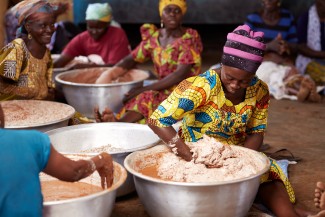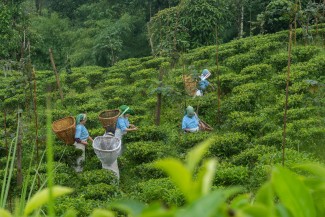Originally published by THOMSON REUTERS FOUNDATION NEWS on 11 September 2019
If we are committed to transforming the lives of women across the globe, we have to start with the least developed countries
Let’s get real.
We have a long way to go to fix the world’s gender gap. In the least developed countries, which range from Bhutan to Mozambique to Zambia, reducing this gap will be even more difficult.
This is because approximately 75 percent of the population of these countries lives in dire poverty, and they face a tough mix of structural, historical and geographic impediments to development. For the women there, they also have less access to education and fewer opportunities for good work.
People in poor countries, and especially women, are also vulnerable to global economic fluctuations, environmental shocks and conflicts.
If we are committed to transforming the lives of women across the globe, we have to start with the least developed countries.
Why? First, because women there are some of the most marginalized people in the world, and they need support. Improving their circumstances means confronting norms that don’t change all at once. Second, the least developed countries are home to approximately one billion people, and this is estimated to increase by 33 percent by 2030. And finally, because the gender gap costs money.
Without action, the situation could worsen.
But more women in the workforce means increased benefits. Women invest more of their income in their families, and businesses see improved productivity and better growth. Yet women in poor countries are inundated with restrictions on their ability to trade, from social practices that impede work to extra difficulties starting businesses to lack of access to finance. Thirty-two of the least developed countries have laws preventing women from working in specific jobs, and in Uganda, although women own nearly 40 percent of registered businesses, they receive only nine percent of all credit disbursed.
More women in trade translates into the increased growth that poor countries need, with McKinsey estimating a potential additional $12 trillion in global GDP by 2025 by reducing the gender gap. With those economies advancing very slowly, the decision to place women at the centre of trade action is an easy one. And there is a lot of room to grow.
Women in the least developed countries are already working, and working hard. In Zambia, women are essential in the agriculture sector, and make up 80 percent of food producers. In Uganda, they are powering the lucrative trade across borders, and they are the bulk of the country’s business people in small enterprises and farming.
Women in the least developed countries are also managing the majority of household and childcare duties, and the cumulative work they are shouldering remains largely unrecognized or in sectors deemed ‘informal’. In these informal sectors, 50 percent of female employees are unpaid, compared with 33 percent of men.
So what is being done to correct this?
The East African Community (EAC) has been working for a decade to support cross border traders, especially women by developing infrastructure that makes work safer for women, hosting trainings, creating creches, and trying to formalize the trade. The Democratic Republic of Congo reviewed its laws to allow married women to register businesses, open bank accounts and get jobs. Uganda, through a government initiative popularly known as the Women Fund, is guiding budding women entrepreneurs to financial services and marketing education, with UGX 90 billion ($24.4 million) disbursed between 2015 and 2019.
But much, much more needs to be done.
Truly empowering women in the least developed countries means ensuring they both benefit from trade and that they have the agency to make decisions – in the home and in the marketplace. This means creating gender-sensitive procedures so a woman can start a business as readily as a man. This means alleviating hindrances to working outside the home. This means educating women in business practices and regulations. This means zooming out to gather global partners and resources together for maximum impact, for example through initiatives like Empower Women, Power Trade and SheTrades that adapt to the contrasts in women’s lived experiences across the globe.
It is crucial that we recognize that women are essential in the undertaking to spur growth and alleviate poverty. They are the ones who have the power to transform a country’s development trajectory.
All they need is what has already been granted to men.
There are so many obstacles to overcome. But considering how many, and how massive, the obstacles women have already triumphed over, we don’t have a hopeless task but instead a hopeful one.
Header image of the Port of Honiara in the Solomon Islands - ©Asian Development Bank via Flickr Attribution-NonCommercial-NoDerivs 2.0 Generic (CC BY-NC-ND 2.0) license.
If you would like to reuse any material published here, please let us know by sending an email to EIF Communications: eifcommunications@wto.org.


